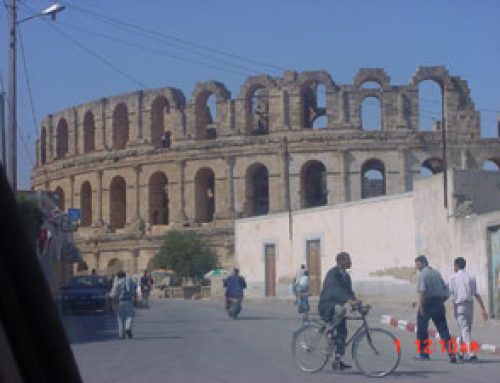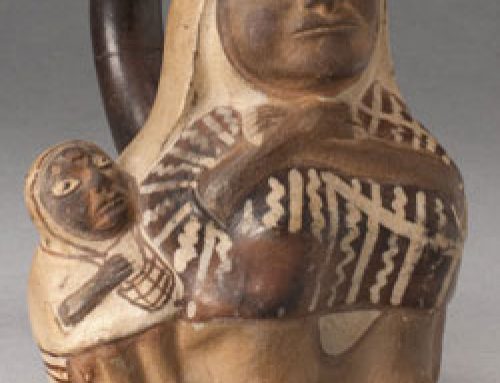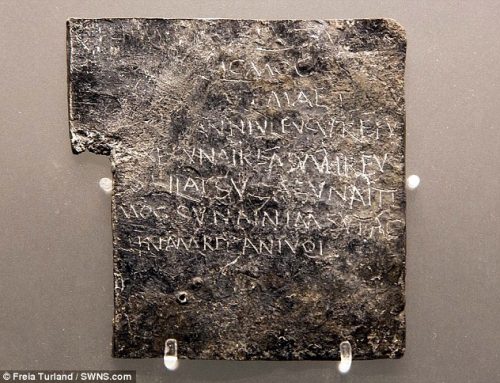
A carving of a fast food restaurant in northern Europe
Many people in bigger towns in ancient Rome lived in just one room and didn’t have kitchens in their apartments. They ate most of their meals in fast food restaurants like this one in the picture. You can see that one guy is sitting at a booth while others are standing- maybe waiting tables? There are a lot of clay cups hanging from the ceiling.
In these restaurants – tabernaria or thermopolia – people often ate pizza, just as you do in fast food restaurants. They ate a kind of white pizza with just cheese and onions on it, and maybe ham or bacon, because the Romans didn’t have tomatoes yet.
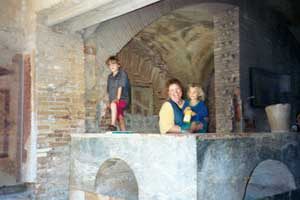
A fast-food thermopolium in ancient Ostia, near Rome
With your pizza, you could also get wine or beer. There wasn’t any drinking age in ancient Rome, but still kids usually drank wine mixed with water so they wouldn’t get drunk. People also ordered soup, and porridge, and small plates of pickles, ham, pickled beets and onions and hard-boiled eggs and toast with fish sauce on it – salty things that would make you thirsty so you would order more wine, so the restaurant could make more money.
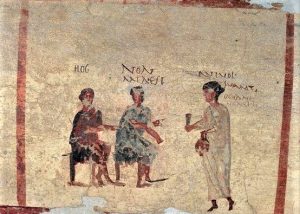
A barmaid brings a drink to two men sitting on chairs. The words show the men arguing about whose drink it is. (Caupona of Salvius, Pompeii, 79 AD)
There were thermopolia and tabernae all over the Roman Empire, from England to Syria and from Germany to North Africa. Just like in McDonalds or Subway today, the Roman fast-food places posted their menu in back of the counter. The bartenders and servers were often slaves or freedmen of the owner. Both men and women worked as servers, as they do today.

The menu of the same thermopolium
The customers called out, “That’s my order!” “No, it’s mine,” and the waitress answered, “Whoever wants it, take it! Hey, Ocean, come! drink!”. The holes in the counter were for keeping soup, pickles, fish sauce, and other food in.
Learn by doing: make pizza from scratch
Roman Fast Food
Bibliography and further reading about the Roman economy:
Eyewitness: Ancient Rome, by Simon James (2004). Easy reading.
Archaeology of the Roman Economy, by Kevin Greene (1991). An expert, but a good writer. Greene, like many archaeologists, comes down on the side of a market economy.
The Roman Empire: Economy, Society and Culture, by Peter Garnsey and Richard Saller (1987). Two experts, but their writing is easy enough for high schoolers. By Finley’s students, and basically on Finley’s side.
The Ancient Economy, by Moses Finley (1973, updated edition 1999). The book that first started this argument. Basically on the side of “consumer cities” and people farming their own food. The writing is, again, clear and simple.
